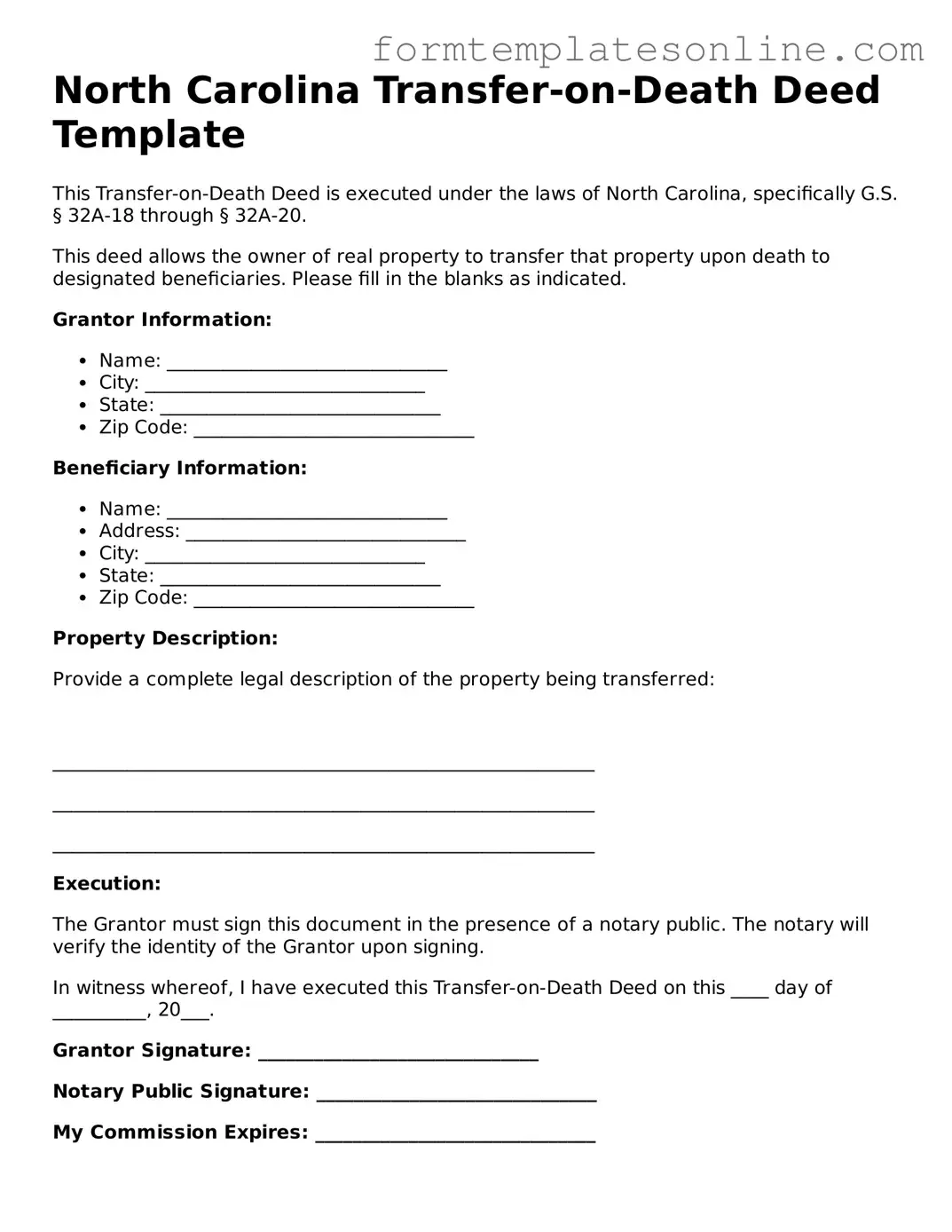What is a Transfer-on-Death Deed in North Carolina?
A Transfer-on-Death Deed (TODD) allows property owners in North Carolina to designate a beneficiary who will receive their real estate upon their death. This deed provides a way to transfer property outside of probate, simplifying the process for heirs. The property remains under the owner's control during their lifetime, and they can revoke or modify the deed at any time before death.
Who can use a Transfer-on-Death Deed?
Any individual who owns real estate in North Carolina can use a Transfer-on-Death Deed. This includes single individuals, married couples, and even certain types of trusts. However, it is important to ensure that the property is not subject to any liens or other encumbrances that could affect the transfer.
How do I create a Transfer-on-Death Deed?
To create a TODD, you must complete the appropriate form, which includes information about the property and the designated beneficiary. The deed must be signed and notarized. After that, it needs to be recorded with the county register of deeds where the property is located. This recording is crucial for the deed to be effective.
Can I change or revoke a Transfer-on-Death Deed?
Yes, you can change or revoke a Transfer-on-Death Deed at any time before your death. To do this, you must create a new deed that explicitly revokes the previous one or modify the existing deed. The new or modified deed must also be signed, notarized, and recorded to take effect.
What happens if I sell the property after creating a Transfer-on-Death Deed?
If you sell the property after creating a TODD, the deed becomes void. The transfer will not take place upon your death because the property is no longer owned by you. If you wish to transfer a different property after the sale, you will need to create a new Transfer-on-Death Deed for that property.
Are there any tax implications with a Transfer-on-Death Deed?
Generally, transferring property via a TODD does not trigger immediate tax consequences. The beneficiary will inherit the property at its fair market value at the time of your death, which may help avoid capital gains tax issues. However, it’s advisable to consult with a tax professional to understand any potential implications specific to your situation.
Is a Transfer-on-Death Deed the same as a will?
No, a Transfer-on-Death Deed is not the same as a will. A will goes into effect only after your death and must go through probate, while a TODD transfers property directly to the beneficiary without probate. This can save time and costs associated with the probate process.
Can I designate multiple beneficiaries in a Transfer-on-Death Deed?
Yes, you can designate multiple beneficiaries in a Transfer-on-Death Deed. You can specify how the property will be divided among them, whether equally or in different proportions. It’s important to be clear in the deed to avoid confusion or disputes later on.
